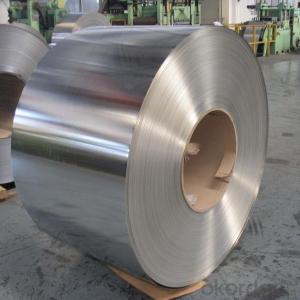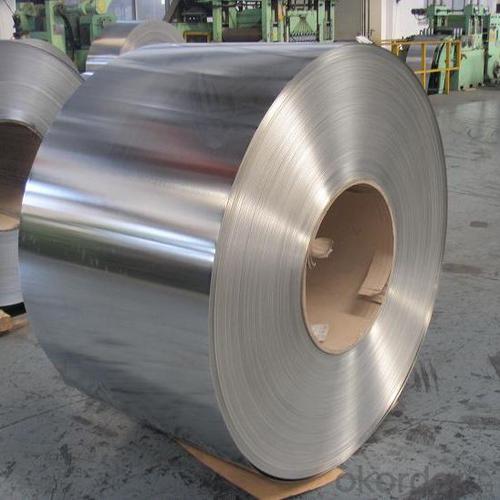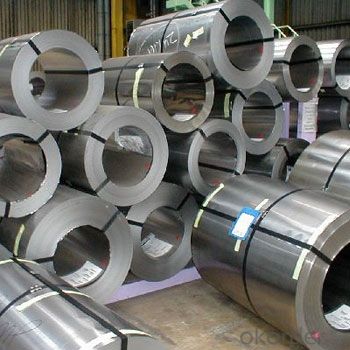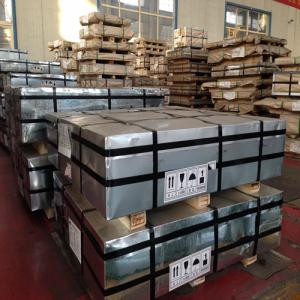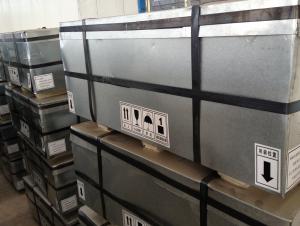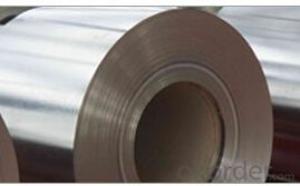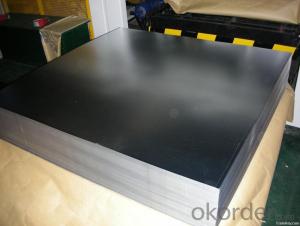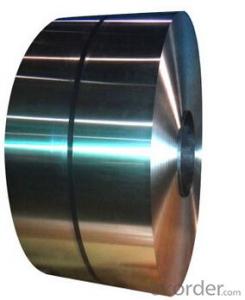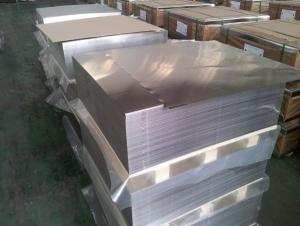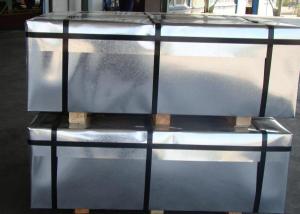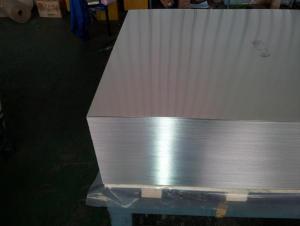Tinplate for Food Pakcaging and Chemical Packaging
- Loading Port:
- Tianjin
- Payment Terms:
- TT OR LC
- Min Order Qty:
- 50 m.t.
- Supply Capability:
- 30000 m.t./month
OKorder Service Pledge
OKorder Financial Service
You Might Also Like
Specification
Tinplate for Food Pakcaging and Chemical Packaging
Specifications
Prime electrical tinplate:
Thickness: 0.15 to 0.50mm
Width: 600 to 1010mm
Temper grade: BA and CA
For metal packaging usage
The Tinplate specification as following:
1, Reference standard: GB2520-88, JIS G3303-1997 and DIN EN10203-91
2, Material: MR, SPCC
3, Thickness available: 0.15mm to 0.50mm
4, Width available: 600mm to 1010 mm
5, Temper grade: T1 - T5 BA and CA both.
6, Tin coating: ordinary 2.8g/2.8g, 5.6g/5.6g, We also can produce according to customers' requests
7,Coil diameter: ID 420/ 508mm, OD from 1,000 to 1,250mm
8,Package: Anti-rust paper,corner protected. by sheet or coils according customer's require.
9, Applications: metal package usage like paint, chemical can,aerosol can and different food can production,
Also battery,electric cable and other industries
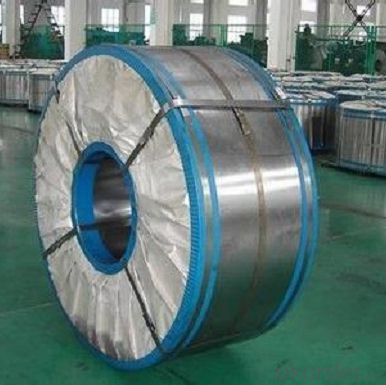
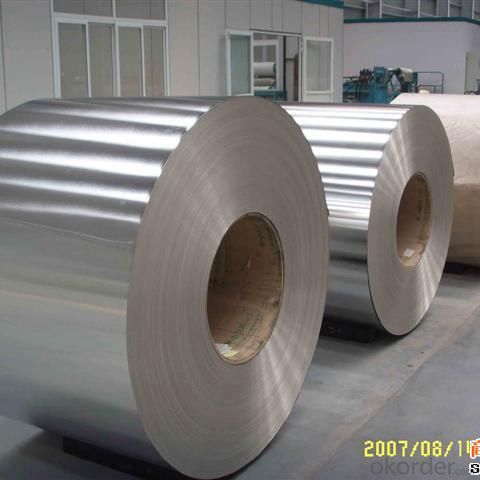
| Tinplate specifications | |||
| Steel Type | SPCC, MR | ||
| Temper(BA&CA) | T1~T5 | ||
| Coating | 1.1~11.2g/m2 | ||
| Thickness and tolerance | 0.15~0.50mm(Tolerance: _+0.01 mm) | ||
| Width & tolerance | 300~1000mm (Tolerance: 0~3mm) | ||
| Cut length & tolerance | 450~``50mm (Tolerance: 0~3mm ) | ||
| Coil inside diameter | 420/508mm | ||
| Coil Weight | 3~10 MT | ||
| Passivation | 311 | ||
| Oiling | DOS | ||
| Surface Finish | Bright, Stone, Silver, Matte | ||
| Packaging | Seaworthy Standard with wooden pallet | ||
| Standards Available | GB/T2520, JIS G3303, ASTM A623M & EN10202 | ||
| Special specitications are available on request. | |||
| Tin coating weight | |||
| Type | Designation of tin coating weight | Min.average tin coating weight(g/m2) | Former Coating Designation |
| Equal tin coating | 1.4/1.4 | 1.2/1.2 | #15 |
| 2.2/2.2 | 2.0/2.0 | #20 | |
| 2.8/2.8 | 2.45/2.45 | #25 | |
| 5.6/5.6 | 5.05/5.05 | #50 | |
| 8.4/8.4 | 7.55/7.55 | #75 | |
| 11.2/11.2 | 10.1/10.1 | #100 | |
| Differentially Coating | 1.4/2.8 | 1.2/2.45 | #15/25 |
| 2.2/2.8 | 2.2/2.45 | #20/25 | |
| 2.8/5.6 | 2.45/5.05 | #25/50 | |
| 2.8/8.4 | 2.45/7.55 | #25/75 | |
| 2.8/11.2 | 2.45/10.1 | #25/100 | |
| 5.6/8.4 | 5.05/7.55 | #50/75 | |
| 5.6/11.2 | 5.05/10.1 | #50/100 | |
| 8.4/11.2 | 7.55/10.1 | #75/100 | |
| Surface finish | |||
| Surface finish | Nominal surface roughness (um Ra) | Characteristic | |
| Bright finish | ≤Q0.35 | Glazed surface obtained after melting treatment of electrotinned smooth raw materail strip with extremely fine rubstone fingure by processing. | |
| Stone finish | 0.25~0.60 | Glazed surface obtained after melting treatment of electrotinned smooth raw materail stripfeaturing certain rubstone figures. | |
| Silver finish | 0.50~1.00 | Glazed surface obtained after melting treatment of electrotinned smooth raw material strip with rough matt furface. | |
| Matte finish | 0.80~2.50 | Matt surface of general matt raw material strip without melting treatment. | |
- Q: How is tinplate coated for promotional items?
- Tinplate is typically coated for promotional items using a process called electrolytic tin plating. This involves immersing the tinplate in an electrolyte bath and passing an electric current through it. The electric current causes tin ions to disperse onto the surface of the tinplate, creating a thin layer of tin coating. This coating provides protection against corrosion and enhances the aesthetics of the promotional items.
- Q: What printing methods are used on tinplate?
- The common printing methods used on tinplate include lithography, offset printing, and silk screen printing.
- Q: What are the different methods of recycling tinplate packaging?
- The different methods of recycling tinplate packaging include sorting, cleaning, shredding, melting, and reprocessing. Sorting involves separating tinplate packaging from other materials. Cleaning removes any contaminants from the tinplate. Shredding breaks down the tinplate into smaller pieces. Melting helps to separate the tin coating from the steel base. Finally, reprocessing involves transforming the separated tin and steel into new products or materials.
- Q: Can tinplate be printed on?
- Yes, tinplate can be printed on.
- Q: How does tinplate compare to other packaging materials in terms of brand recognition?
- Tinplate is known for its excellent brand recognition due to its ability to be easily customized with vibrant designs and logos. Compared to other packaging materials, such as plastic or cardboard, tinplate stands out and contributes to a stronger brand identity and recall for products.
- Q: How does tinplate contribute to the convenience of pet care products?
- Tinplate contributes to the convenience of pet care products by providing a durable and lightweight packaging solution that helps to preserve the quality and freshness of the products. It is easy to handle and store, making it convenient for pet owners to use and transport the products. Additionally, tinplate packaging is resistant to corrosion and can be easily recycled, promoting sustainability in the pet care industry.
- Q: How is tinplate used in the beverage industry?
- Tinplate is commonly used in the beverage industry for packaging purposes, such as cans for carbonated drinks, fruit juices, and other beverages. The tin coating on the steel sheet provides a protective barrier, preventing corrosion and maintaining the quality and taste of the beverage. Additionally, the versatility of tinplate allows for various shapes and sizes of cans, making it a popular choice for beverage manufacturers.
- Q: Can tinplate be used for paint can packaging?
- Yes, tinplate can be used for paint can packaging. Tinplate is a widely used material for packaging due to its durability and ability to protect the contents from external factors. It is commonly used for paint can packaging as it provides a strong barrier against moisture and corrosion, ensuring the paint remains in good condition. Additionally, tinplate is easily recyclable, making it an environmentally friendly choice for packaging.
- Q: How does tinplate affect the sound quality of musical instruments?
- Tinplate can have a significant impact on the sound quality of musical instruments. Due to its unique properties, such as being lightweight and having good resonance, tinplate is often used to construct various components of musical instruments, particularly in brass instruments like trumpets and trombones. The use of tinplate can enhance the instrument's tonal characteristics, producing a brighter and more vibrant sound. Additionally, tinplate's smooth surface can contribute to improved airflow and response, allowing musicians to achieve better control and projection. Overall, tinplate plays a crucial role in shaping the sound quality and performance of musical instruments.
- Q: How does tinplate packaging contribute to product protection against odors?
- Tinplate packaging contributes to product protection against odors primarily through its excellent barrier properties. The tin layer on the surface of the packaging acts as a barrier, preventing the transfer of odors from the outside environment to the product inside. This helps to maintain the product's freshness and quality by effectively sealing off any potential odor contamination.
Send your message to us
Tinplate for Food Pakcaging and Chemical Packaging
- Loading Port:
- Tianjin
- Payment Terms:
- TT OR LC
- Min Order Qty:
- 50 m.t.
- Supply Capability:
- 30000 m.t./month
OKorder Service Pledge
OKorder Financial Service
Similar products
Hot products
Hot Searches
Related keywords
